Business Books to Watch in August
August 06, 2018
Twenty books being published in August that we're hoping to spend more time with before summer's end.
These are just twenty of the books being published in August that have crossed our desks here at 800-CEO-READ. Pick one up at your local bookstore (or from us) today!
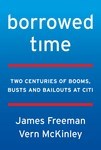 Borrowed Time: Two Centuries of Booms, Busts, and Bailouts at Citi by James Freeman & Vern McKinley, Harper Business
Borrowed Time: Two Centuries of Booms, Busts, and Bailouts at Citi by James Freeman & Vern McKinley, Harper Business
The disturbing, untold story of one of the largest financial institutions in the world, Citigroup—one of the “too big to fail” banks—from its founding in 1812 to its role in the 2008 financial crisis, and the many disasters in between.
During the 2008 financial crisis, Citi was presented as the victim of events beyond its control—the larger financial panic, unforeseen economic disruptions, and a perfect storm of credit expansion, private greed, and public incompetence. To save the economy and keep the bank afloat, the government provided huge infusions of cash through multiple bailouts that frustrated and angered the American public.
But, as financial experts James Freeman and Vern McKinley reveal, the 2008 crisis was just one of many disasters Citi has experienced since its founding more than two hundred years ago. In Borrowed Time, they reveal Citi’s history of instability and government support. It’s not a story that either Citi or Washington wants told.
From its founding in 1812 and through much of its history the bank has been tied to the federal government—a relationship that has benefited both. Many of its initial stockholders had owned stock in the Bank of the United States, and its first president, Samuel Osgood, had been a member of the Continental Congress and America’s first Postmaster General. From its earliest years, Citi took massive risks that led to crisis. But thanks to private investors, including John Jacob Astor, they survived throughout the nineteenth century.
In the twentieth century, Senator Carter Glass blamed Citi CEO “Sunshine Charlie” Mitchell for the 1929 stock market crash, and the bank was actually in violation of the senator’s signature achievement, the Glass-Steagall law, in the late 1990s until then U.S. Treasury Secretary, Robert Rubin, engineered the law’s repeal. Rubin later became the chairman of the executive committee of Citigroup, helping to oversee the bank as it ramped up its increasing mortgage risks before the 2008 crash.
The scale of the financial panic of 2008 was not, as the media and experts claim, unprecedented. As Borrowed Time shows, disasters have been relatively frequent during the century of government-protected banking—especially at Citi.
 Mastering Fear: A Navy SEAL's Guide by Brandon Webb & John David Mann, Portfolio
Mastering Fear: A Navy SEAL's Guide by Brandon Webb & John David Mann, Portfolio
From New York Times bestselling author and former Navy SEAL Brandon Webb comes a simple yet powerful five-step guide to transforming your life by making your fears work for you instead of against you.
Brandon Webb has run life-threatening missions in the world’s worst trouble spots, whether that meant jumping out of airplanes, taking down hostile ships on the open sea, or rolling prisoners in the dead of night in the mountains of Afghanistan. As a Navy SEAL, he learned how to manage the natural impulse to panic in the face of terrifying situations. As media CEO and national television commentator, he has learned how to apply those same skills in civilian life.
Drawing on his experiences in combat and business, along with colorful anecdotes from his vast network of super-achiever friends from astronauts to billionaires, Webb shows how people from all walks of life can stretch and transcend their boundaries and learn to use their fears as fuel to achieve more than they ever thought possible. “Fear can be a set of manacles, holding you prisoner,” writes Webb. “Or it can be a slingshot, catapulting you on to greatness.”
The key, says Webb, is not to fight fear or try to beat it back, but to embrace and harness it. In the process, rather than being your adversary, your fear becomes a secret weapon that allows you to triumph in even the most adverse situations. In Mastering Fear, Webb and his bestselling coauthor John David Mann break this transformation down into five practical steps, creating a must-read manual for anyone looking for greater courage and mastery in their lives.
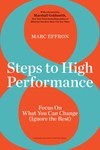 8 Steps to High Performance: Focus On What You Can Change (Ignore the Rest) by Marc Effron, Harvard Business Review Press
8 Steps to High Performance: Focus On What You Can Change (Ignore the Rest) by Marc Effron, Harvard Business Review Press
There's no shortage of advice out there on how to perform better, and better than others, at work. The problem is knowing which methods are actually proven to work—and how you should act on them to get the best results.
In 8 Steps to High Performance, talent expert and bestselling author Marc Effron cuts through the noise with his signature "science-based simplicity" approach to identify what matters most and show you how to optimally apply your time and effort to boost your performance. It turns out that higher performance comes from doing many things well—but some of those things are not in your power to change. Effron reveals the eight key factors you do control and practical steps for improving yourself on each one. You’ll learn:
- How to set goals that create higher performance
- Which behaviors predict higher performance in different situations
- How to quickly develop the most important capabilities
- Who to connect with and why
- How to understand and adapt to your company's strategy
- Why you sometimes shouldn’t be the "genuine" you
- How to best manage your body to sustain your performance
- How to avoid management fads that distract you from high performance
Research-based, practical, and filled with self-assessments, tools, and templates to support your performance goals at work, this short, powerful book will help you and anyone on your team deliver outstanding results.
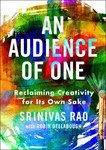 An Audience of One: Reclaiming Creativity for Its Own Sake by Srinivas Rao, Portfolio
An Audience of One: Reclaiming Creativity for Its Own Sake by Srinivas Rao, Portfolio
The creator of the Unmistakable Creative podcast makes a counterintuitive argument: By focusing your creative work on pleasing yourself, you can increase your productivity, happiness, and (eventually, paradoxically) the size of your audience.
Creating for your own pleasure—whether you’re writing a novel, composing songs, or painting a landscape—can seem pointless. It’s tempting to focus on pursuing money and fame, rather than the process itself. But as Srini Rao warns, creating then turns into a chore that can harm your self-esteem and suck the pleasure out of life, rather than being a source of joy.
Rao, host of the podcast The Unmistakable Creative, argues that we should counter this thinking by intentionally creating art for ourselves alone—an audience of one. In this book he shares the fascinating true stories of creatives who took this path, along with actionable tips and the research of creativity experts. You’ll learn, for example:
- How Oprah’s intentional focus on her own work rather than the opinions of everyone else catapulted her into one of the most popular talk shows of all time.
- How being process-driven can not only help you produce more work, but can make you happier outside of your creative time.
- How to put together a creative “team of rivals” whose feedback can help you hone your craft and filter out useless feedback.
By playing to an audience of one, we can find more happiness, increased productivity, and a greater sense of community.
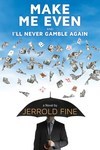 Make Me Even and I'll Never Gamble Again: A Novel by Jerrold Fine, Rosetta Books
Make Me Even and I'll Never Gamble Again: A Novel by Jerrold Fine, Rosetta Books
Drawing from his own experiences in the turbulent ‘70s and ‘80s, hedge fund pioneer Jerrold Fine blends a heartfelt story of a young man fiercely intent on achieving independence with a fascinating insider’s look at the perks and pitfalls of a high-stakes life in the world of financial markets.
Rogers Stout has the gambler’s gifts—a titanic brain, an uncanny ability to read people, and a risk-taker’s daring. As an apathetic high school student who loves baseball but lacks a 90-mph fastball, he knows that the game does not begin until the ball leaves the pitcher’s hand. But his life needs direction.
Everything changes the summer he is invited into the boisterous environment of an investment bank’s trading room, and to a gambling hall dive where he immediately wins big at poker, capturing the attention of his co-workers with his card-playing skills. Intrigued by trading markets, Rogers’ intellectual curiosity takes him to Wharton and then Wall Street, where he faces challenges as an outsider who thinks and acts differently from the white-shoe establishment. With his intuition and prowess, he’s ready to rewrite the rules and tackle markets with a flair that leaves his employers flabbergasted. Rogers leans heavily on his gut instincts and the unusual cadre of friendships he cultivates, but learns the hard way to be alert to the perils that await him. As Rogers plays his career hand, life plays another. Should he follow the temptress Elsbeth and her ravishing beauty, or Charlotte, his high-spirited first love?
An intriguing look at human aspiration and the interplay of honor, greed, fear, and individuality, the novel Make Me Even and I'll Never Gamble Again reveals a time when a new generation upended the status quo on Wall Street and forever changed investing.
Along with two Wharton colleagues Jerrold Fine, at age 24, started one of the first hedge funds in 1967. Nine years later he founded a private investment firm which he managed until he converted it into a family office in 2014. That was the year Rogers Stout entered his consciousness and refused to leave.
 The Pomodoro Technique: The Acclaimed Time-Management System That Has Transformed How We Work by Francesco Cirillo, Currency
The Pomodoro Technique: The Acclaimed Time-Management System That Has Transformed How We Work by Francesco Cirillo, Currency
The creator of the famed Pomodoro Technique, Francesco Cirillo, has rewritten his world-renowned book on productivity and time management, with several new chapters on teamwork; now available in bookstores for the first time, the self-published classic of productivity has been downloaded more than two million times.
Francesco Cirillo’s Pomodoro Technique is the world-renowned system for improving productivity that has been in use the world over, and adapted by countless others, since 1999. Cirillo first developed his system for improving productivity as a university student in Italy in the early 1990s. By using a kitchen timer in the shape of a pomodoro (Italian for tomato), Cirillo was able to concentrate the amount of time he spent working on a project into 25-minute intervals, with short 5-minute breaks, to get more done. Each pomodoro, or 25-minute work interval, is performed without interruptions; by grouping three or four pomodoros in a row, users can vastly improve their productivity, enhance their focus, and better achieve their goals.
The process underlying the Pomodoro Technique consists of five stages: planning the day’s activities at the beginning of the day; tracking your efforts throughout the day; recording your daily activities; processing what you have done; and visualizing areas of improvement afterward. Unplanned interruptions are written down as they come up, to be dealt with later in the day.
The Pomodoro Technique allows readers to reduce complexity, find out how much effort and time an activity requires, and help improve how they work so they can accomplish more in the same amount of time in the future.
 Growth IQ: Get Smarter About the Choices that Will Make or Break Your Business by Tiffani Bova, Portfolio
Growth IQ: Get Smarter About the Choices that Will Make or Break Your Business by Tiffani Bova, Portfolio
Do you know the best way to drive your company’s growth? If not, it’s time to boost your Growth IQ.
Trying to find the one right move that will improve your business’s performance can feel overwhelming. But, as you’ll discover in Growth IQ, there are just ten simple—but easily misunderstood—paths to growth, and every successful growth strategy can be boiled down to picking the right combination and sequence of these paths for your current context.
Tiffani Bova travels around the world helping companies solve their most vexing problem: how to keep growing in the face of stiff competition and a fast-changing business environment. Whether she’s presenting to a Fortune 500 board of directors or brainstorming over coffee with a startup founder, Bova cuts through the clutter and confusion that surround growth.
Now, she draws on her decades of experience and more than thirty fascinating, in-depth business stories to demonstrate the opportunities—and pitfalls—of each of the ten growth paths, how they work together, and how they apply to business today. You’ll see how, for instance:
- Red Bull broke Coca-Cola and PepsiCo’s stranglehold on the soft drink market by taking the Customer Base Penetration path to establish a foothold with adventure sports junkies and expand into the mainstream.
- Marvel transformed itself from a struggling comic book publisher into a global entertainment behemoth by using a Customer and Product Diversification strategy and shifting their focus from comic books to comic book characters in movies.
- Starbucks suffered a brand crisis when they overwhelmed their customers with a Product Expansion strategy, and brought back CEO Howard Schultz to course-correct by returning to the Customer Experience path.
Through Bova’s insightful analyses of these and many other case studies, you’ll see why it can be a mistake to imitate strategies that worked for your competitors, or rely on strategies that worked for you in the past. To grow your company with confidence, you first need to grow your Growth IQ.
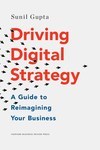 Driving Digital Strategy: A Guide to Reimagining Your Business by Sunil Gupta, Harvard Business Review Press
Driving Digital Strategy: A Guide to Reimagining Your Business by Sunil Gupta, Harvard Business Review Press
Digital transformation is no longer news—it's a necessity.
Despite the widespread threat of disruption, many large companies in traditional industries have succeeded at digitizing their businesses in truly transformative ways.
The New York Times, formerly a bastion of traditional media, has created a thriving digital product behind a carefully designed paywall. Best Buy has transformed its business in the face of Amazon's threat. John Deere has formed a data-analysis arm to complement its farm-equipment business. And Goldman Sachs and many others are using digital technologies to reimagine their businesses. In Driving Digital Strategy, Harvard Business School professor Sunil Gupta provides an actionable framework for following their lead.
For over a decade, Gupta has studied digital transformation at Fortune 500 companies. He knows what works and what doesn't. Merely dabbling in digital or launching a small independent unit, which many companies do, will not bring success. Instead you need to fundamentally change the core of your business and ensure that your digital strategy touches all aspects of your organization: your business model, value chain, customer relationships, and company culture. Gupta covers each aspect in vivid detail while providing navigation tips and best practices along the way.
Filled with rich and illuminating case studies of companies at the forefront of digital transformation, Driving Digital Strategy is the comprehensive guide you need to take full advantage of the limitless opportunities the digital age provides.
 Can You Learn to Be Lucky?: Why Some People Seem to Win More Often Than Others by Karla Starr, Portfolio
Can You Learn to Be Lucky?: Why Some People Seem to Win More Often Than Others by Karla Starr, Portfolio
A talented journalist reveals the hidden patterns behind what we call “luck”—and shows us how we can all improve outcomes that only appear to be random.
“Do you believe in luck?” is a polarizing question, one you might ask on a first date. Some of us believe that we make our own luck. Others see inequality everywhere and believe luck is the only possible explanation. Karla Starr has a third answer: “random” outcomes have predictable causes; we call them lucky because their traces are so faint.
In this groundbreaking book, Starr traces wealth, health, and happiness back to subconscious neurological processes, blind cultural assumptions, and tiny details you’re in the habit of overlooking. Each chapter blasts open the hardware behind an outcome you thought was random and shows how to hack it. For instance:
- You can beat the 10,000 hour rule if you pick the right skill at the right time, and have the right resources to train.
- Your resume can’t override the gut-level assumptions a potential employer makes about you based on the last employee who happens to look similar.
- People make assumptions about your intelligence, kindness, and trustworthiness based on cues that have nothing to do with these traits.
Starr ends each chapter with two liberating possibilities: Either harness the world’s invisible biases to work to your advantage, or recruit your personal strengths to overcome these external factors. By ending the guessing game about how luck works, Starr allows you to improve your fortunes while expending minimal effort.
 Costovation: Innovation That Gives Your Customers Exactly What They Want—And Nothing More by Stephen Wunker & Jennifer Luo Law, HarperCollins Leadership
Costovation: Innovation That Gives Your Customers Exactly What They Want—And Nothing More by Stephen Wunker & Jennifer Luo Law, HarperCollins Leadership
Wow your customers . . . with "less."
Cut costs—it's a common corporate refrain. But if you constantly slash expenditures, what happens to innovation? How can you stay competitive and satisfy customers? Costovation solves the dilemma of how to spend less and innovate more. The book's revolutionary approach broadens the definition of innovation beyond products to the business model itself.
With costovation, you let go of assumptions, take a fresh look at the market, and relentlessly focus on what customers really want. Consider Planet Fitness—it grew to 7.3 million members by concentrating on casual exercisers. Those folks don't care about frills. They want easy, low-cost access to good equipment. Although it's inexpensive to run, Planet Fitness ranks highest in gym satisfaction. Gourmet grocer, Picard, sells only frozen food. With less perishable inventory, they compress costs while delighting a discerning but busy clientele.
Packed with examples and interactive exercises, the book explores cost innovation strategies that work for big and small companies alike. From open innovation and cost-sharing, to simplifying products and turning waste into new offerings, readers learn how rivals are carving out niches, protecting positions, and dominating industries. Innovation and cost-cutting are not opposites. Combined, they expose untapped opportunities to outsmart and underspend competitors.
 WorkParty: How to Create & Cultivate the Career of Your Dreams by Jaclyn Johnson, Gallery Books
WorkParty: How to Create & Cultivate the Career of Your Dreams by Jaclyn Johnson, Gallery Books
First, we leaned in. Now we stand up.
Jaclyn Johnson—the founder and CEO behind Create & Cultivate, the fastest growing online platform and conference for millennial women in business—offers a rallying cry for a new generation of women who are redefining the meaning of work on their own terms: WorkParty.
Jaclyn suffered a massive blow in her early twenties. She was on an upward career climb and confidently moved across the country for a job—and then, was abruptly let go. Attempting to turn that closed door into an open window, she launched a company with a trusted business partner. Soon after, she discovered said business partner had made detrimental decisions to the company without her knowledge. Before she knew it, she was in the throes of a brutal business partner break up. She was only twenty-four.
Determined to bounce back, Jaclyn overhauled the mess that was her life, and by the time she was in her early thirties, she had sold a company and launched the much-buzzed about Create & Cultivate platform—and advised and invested in multiple million-dollar projects at the same time. So, how did she do it?
In WorkParty, Jaclyn shows how she turned distrust into determination, frustration into fuel, and heartache into hard work—and how you can, too.
With stories from leading female entrepreneurs including Christene Barberich (co-founder of Refinery29), Alli Webb (creator of Drybar), Morgan Debaun (founder of Blavity), Jen Gotch of Ban.do, Rebecca Minkoff, and Kendra Scott, you will learn the tips and tricks from the best in the business while cultivating the passion and happiness you need to succeed.
![]() Silicon States: The Power and Politics of Big Tech and What It Means for Our Future by Lucie Greene, Counterpoint
Silicon States: The Power and Politics of Big Tech and What It Means for Our Future by Lucie Greene, Counterpoint
A bracing look at how Google, Apple, Amazon, Facebook, and other Silicon Valley power players are using their influence across the globe to encroach upon our civil landscape.
In an era when faith in government and its institutions is quickly eroding, the businesses of Silicon Valley are stepping in to fill the gap. With outsize supplies of cash, talent, and ambition, a small group of corporations have been gradually seizing leadership—and consumer confidence—around the world.
In Silicon States, renowned futurist and celebrated international think-tank leader Lucie Greene offers an unparalleled look at the players, promises, and potential problems of Big Tech. Through interviews with corporate leaders, influential venture capitalists, scholars, journalists, activists, and more, Greene explores the tension inherent in Silicon Valley’s global influence. If these companies can invent a social network, how might they soon transform our political and health-care systems? If they can revolutionize the cell phone, what might they do for space travel, education, or the housing market? As Silicon Valley faces increased scrutiny over its mistreatment of women, cultural shortcomings, and its role in widespread Russian election interference, we are learning where its interests truly lie, and about the great power these companies wield over an unsuspecting citizenry.
While the promise of technology is seductive, it is important to understand these corporations’ possible impacts on our political and socioeconomic institutions. Greene emphasizes that before we hand our future over to a rarefied group of companies, we should examine the world they might build and confront its benefits, prejudices, and inherent flaws. Silicon States pushes us to ask if, ultimately, this is the future we really want.
 Dangerous Leaders: How and Why Lawyers Must Be Taught to Lead Anthony C. Thompson, Stanford University Press
Dangerous Leaders: How and Why Lawyers Must Be Taught to Lead Anthony C. Thompson, Stanford University Press
Flint, Michigan's water crisis, the New Jersey "Bridgegate" scandal, Enron: all these incidents are examples of various forms of leadership failure. More specifically, each represents marked failures among leaders with legal training.
When we look closer at one profession from which we often draw our political, business, and organizational leaders—the legal profession—we find a deep chasm between what law schools teach and what the world expects. Legal education ignores leadership, sending the next generation of legally-minded leaders into a dynamic world dangerously unprepared.
Dangerous Leaders exposes the risks and results of leaving lawyers unprepared to lead. It provides law schools, law students, and the legal profession with the leadership tools and models to build a better foundation of leadership acumen. Anthony C. Thompson draws from his twenty years of experience in global executive education for Fortune 100 companies and his experience as a law professor to chart a path forward for better leadership instruction within the legal academy. Using vivid, real-life case studies, Thompson explores catastrophic political, business, and legal failures that have occurred precisely because of a lapse in leadership from those with legal training. He maintains that these practices are chronic leadership failures that could have been avoided. In examining these patterns of failures, it becomes apparent that legal education has fundamentally misread its task.
Thompson proposes a fundamental rethinking of legal education, based upon intersectional leadership, to prepare lawyers to assume the types of roles that our increasingly fast-paced world requires. Intersectional leadership challenges lawyer leaders to see the world through a different lens and expects a form of inclusion and respect for other perspectives and experiences that will prove critical to maneuvering in a complex environment. Dangerous Leaders imparts invaluable tools and lessons to best equip current and future generations of legal leaders.
 Clockwork: Design Your Business to Run Itself by Mike Michalowicz, Portfolio
Clockwork: Design Your Business to Run Itself by Mike Michalowicz, Portfolio
Do you worry that your business will collapse without your constant presence? Are you sacrificing your family, friendships, and freedom to keep your business alive? What if instead your business could run itself, freeing you to do what you love when you want, while it continues to grow and turn a profit?
It’s possible. And it’s easier than you think.
If you’re like most entrepreneurs, you started your business so you could be your own boss, make the money you deserve, and live life on your own terms. In reality, you’re bogged down in the daily grind, constantly putting out fires, answering an endless stream of questions, and continually hunting for cash.
Now, Mike Michalowicz, the author of Profit First and other small-business bestsellers, offers a straightforward step-by-step path out of this dilemma. In Clockwork, he draws on more than six years of research and real life examples to explain his simple approach to making your business ultra-efficient.
Among other powerful strategies, you will discover how to:
- Make your employees act like owners: Free yourself from micromanaging by using a simple technique to empower your people to make smart decisions without you.
- Pinpoint your business’s most important function: Unleash incredible efficiency by identifying and focusing everyone on the one function that is most crucial to your business.
- Know what to fix next: Most entrepreneurs try to fix every inefficiency at once and end up fixing nothing. Use the “weakest link in the chain” method to find the one fix that will add the most value now.
Whether you have a staff of one, one hundred, or somewhere in between, whether you’re a new entrepreneur or have been overworked and overstressed for years, Clockwork is your path to finally making your business work for you.
 Twilight of the Money Gods: Economics as a Religion and How It All Went Wrong by John Rapley, Simon & Schuster (UK)
Twilight of the Money Gods: Economics as a Religion and How It All Went Wrong by John Rapley, Simon & Schuster (UK)
A comprehensive examination of the continually changing world of money, economic theory, and how we got things so wrong in the run-up the 2007 recession—and how we can rebuild confidence for our financial future.
Imagine one day you went to a cash machine and found your money was gone. You rushed to your bank branch, where a teller said that overnight people had stopped believing in money, and it all vanished. Seem incredible? It happened, and it could happen again.
Twilight of the Money Gods is the story of economics, told not as the science it strove to be, but as the religion it became. Over two centuries, it searched for the hidden codes which would reveal the path to a promised land of material abundance. While its prophets—from Adam Smith to John Maynard Keynes and Milton Friedman—concerned themselves with the human condition, its priesthood gradually grew remote from its followers, until it lost sight of their tribulations. Today, amid a crisis of faith in their expertise, we must re-imagine the topic of economics for a new era—one filled with both danger and opportunity.
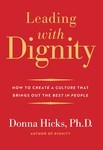 Leading with Dignity: How to Create a Culture That Brings Out the Best in People by Donna Hicks, Yale University Press
Leading with Dignity: How to Create a Culture That Brings Out the Best in People by Donna Hicks, Yale University Press
What every leader needs to know about dignity and how to create a culture in which everyone thrives.
This landmark book from an expert in dignity studies explores the essential but under-recognized role of dignity as part of good leadership. Extending the reach of her award-winning book Dignity: Its Essential Role in Resolving Conflict, Donna Hicks now contributes a specific, practical guide to achieving a culture of dignity.
Most people know very little about dignity, the author has found, and when leaders fail to respect the dignity of others, conflict and distrust ensue. She highlights three components of leading with dignity: what one must know in order to honor dignity and avoid violating it; what one must do to lead with dignity; and how one can create a culture of dignity in any organization, whether corporate, religious, governmental, healthcare, or beyond. Brimming with key research findings, real-life case studies, and workable recommendations, this book fills an important gap in our understanding of how best to be together in a conflict-ridden world.
 This Is Day One: A Practical Guide to Leadership That Matters by Drew Dudley, Hachette Books
This Is Day One: A Practical Guide to Leadership That Matters by Drew Dudley, Hachette Books
Based on his TEDx talk "Everyday Leadership (the Lollipop Moment)"—voted one of the 15 most inspirational TED talks of all time—This Is Day One is leadership expert Drew Dudley's guide to cultivating the behaviors that will help you to succeed and empower those around you.
If you're intimidated by the mystique surrounding leadership, this book is for you. Dudley simplifies leadership without denying its complexity, demonstrating that leadership in all its forms begins at the same clear and accessible place for everyone: what he calls "Day One."
Day One is when you discover, define, and start to consistently deliver on your foundational leadership values. Living that day over and over is what creates leaders, and Dudley provides the key tools necessary to craft and commit to your own personal Day One, including:
- A step-by-step process designed to surface your core leadership values and embed them into your daily behavior
- A roadmap to behavioral changes proven to increase commitment, pride, productivity, and happiness
- Insights into key leadership values that drive performance and impact
Sharing the process that led him through battles with alcohol, obesity, and personal tragedy, Dudley shows you how to develop a relentless commitment to the daily behaviors that will make you a better executive, coach, or teacher, and how you can inspire others to do the same.
Most of the leadership on the planet comes from people who don't see themselves as leaders. This Is Day One shows you how to start changing that. Through the insights of leaders of all types—CEOs, elite athletes, cab drivers, custodians, and everyone in between—Dudley helps you understand what your Day One needs to look like, reminds you why you're a leader, and makes clear what you can do about it—starting today, on Day One.
 Winners Take All: The Elite Charade of Changing the World by Anand Giridharadas, Knopf
Winners Take All: The Elite Charade of Changing the World by Anand Giridharadas, Knopf
An insider’s groundbreaking investigation of how the global elite’s efforts to “change the world” preserve the status quo and obscure their role in causing the problems they later seek to solve.
Former New York Times columnist Anand Giridharadas takes us into the inner sanctums of a new gilded age, where the rich and powerful fight for equality and justice any way they can—except ways that threaten the social order and their position atop it. We see how they rebrand themselves as saviors of the poor; how they lavishly reward “thought leaders” who redefine “change” in winner-friendly ways; and how they constantly seek to do more good, but never less harm. We hear the limousine confessions of a celebrated foundation boss; witness an American president hem and haw about his plutocratic benefactors; and attend a cruise-ship conference where entrepreneurs celebrate their own self-interested magnanimity.
Giridharadas asks hard questions: Why, for example, should our gravest problems be solved by the unelected upper crust instead of the public institutions it erodes by lobbying and dodging taxes? He also points toward an answer: Rather than rely on scraps from the winners, we must take on the grueling democratic work of building more robust, egalitarian institutions and truly changing the world. A call to action for elites and everyday citizens alike.
 Hyperfocus: How to Be More Productive in a World of Distraction by Chris Bailey, Viking
Hyperfocus: How to Be More Productive in a World of Distraction by Chris Bailey, Viking
A practical guide to managing your attention—the most powerful resource you have to get stuff done, become more creative, and live a meaningful life.
Our attention has never been as overwhelmed as it is today. Many of us recognize that our brains struggle to multitask. Despite this, we feel compelled to do so anyway while we fill each moment of our lives to the brim with mindless distraction. Hyperfocus provides profound insights into how you can best take charge of your attention to achieve a greater sense of purpose and productivity throughout the day.
The most recent neuroscientific research reveals that our brain has two powerful modes that can be unlocked when we use our attention effectively: a focused mode (hyperfocus), which is the foundation for being highly productive, and a creative mode (scatterfocus), which enables us to connect ideas in novel ways. Hyperfocus helps you access each of the two mental modes so you can concentrate more deeply, think more clearly, and work and live more deliberately every day. Chris Bailey examines such topics such as:
- Identifying and dealing with the four key types of distraction and interruption;
- Establishing a clear physical and mental environment in which to work;
- Controlling motivation and working fewer hours to become more productive;
- Taking time-outs with intention;
- Multitasking strategically; and
- Learning when to pay attention and when to let your mind wander wherever it wants to.
By transforming how you think about your attention, Hyperfocus reveals that the more effectively you learn to take charge of it, the better you’ll be able to manage every aspect of your life.
 Autonomy: The Quest to Build the Driverless Car—And How It Will Reshape Our World by Lawrence D. Burns, Christopher Shulgan, Ecco
Autonomy: The Quest to Build the Driverless Car—And How It Will Reshape Our World by Lawrence D. Burns, Christopher Shulgan, Ecco
A deep dive into the race to develop and perfect the driverless car—an innovation that promises to be the most disruptive change to our way of life since the smartphone—by a veteran insider of the automotive and tech worlds.
In Autonomy, former GM executive and current advisor to the Google self-driving car project Lawrence Burns offers a sweeping history of the race to make the driverless car a reality. In the past decade, Silicon Valley companies like Google, Tesla, and Uber have positioned themselves to revolutionize the way we move around by developing driverless vehicles, while traditional auto companies like General Motors, Ford, and Daimler have been fighting back by partnering by with new tech start-ups. It’s not a question of whether the self-driving car will disrupt the automobile industry; it’s a question of when, how, and who will win the race.
With the first driverless car likely to hit markets in less than five years, Burns also looks toward the future and explains how this new technology will impact our lives—from removing the hassles of driving, parking, and refueling our cars to eliminating 90 percent of road fatalities, drastically reducing our carbon footprint, and automating yet another segment of blue-collar industry, putting more workers out of their jobs.
We are on the brink of a technological revolution that promises to fundamentally change how we interact with our world. A chronicle of the past, diagnosis of the present, and prediction of the future, Autonomy is the ultimate guide to understanding the driverless car and to navigating the revolution it sparks.








